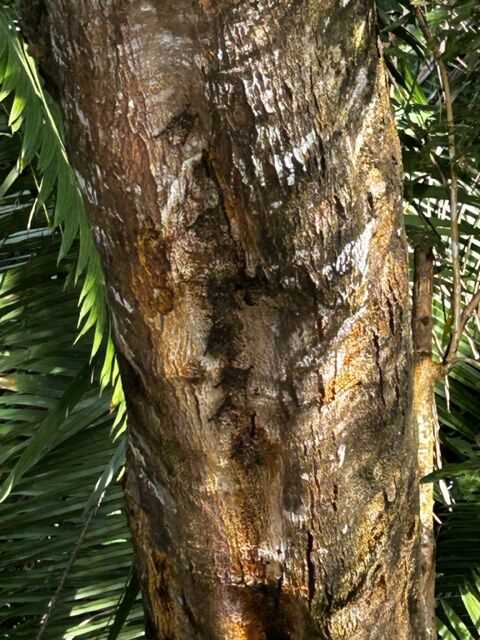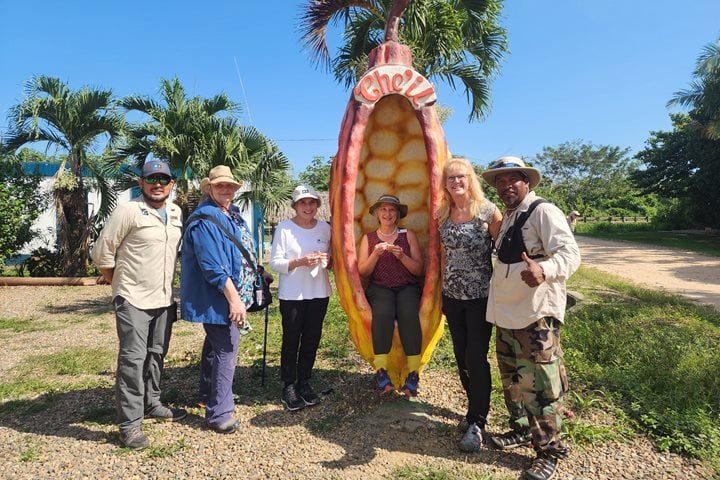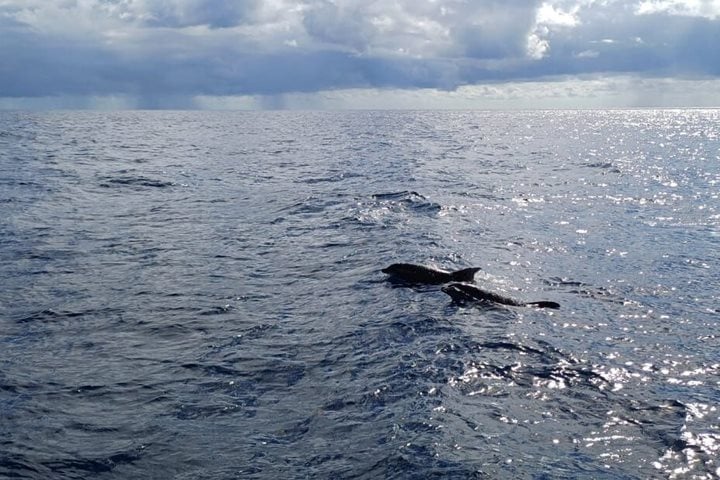We spent the morning cruising Monkey River with our local guides. We enjoyed the scenery and observed many species of the birds that inhabit this area. As we neared a tree, our guide spotted what initially looked like dark lichens on the tree’s underside. In fact, we were looking at greater sac-winged bats! The most common bats in the rainforest, these bats often roost on large trees. They are insectivores and use echolocation calls through the mouth to track their prey, which includes flies, mosquitos, butterflies, and moths. The term "sac-winged" refers to small pouches on the bats’ wings. These sacs are used by males to attract females and to mark their harem territory. During daily grooming, males fill these sacs with drops of urine and glandular secretions. While displaying, the male hovers in front of a female and fans her vigorously to expose her to the scent of the mixture in the wing sacs. Males shake the contents of the sac to warn off intruders from the harem territory. Microbial fermentation in the sac may produce identifiable scent signals.
As we came around a bend in the river, we saw a beautiful tree. This was the Ceiba tree (Ceiba pentandra), also known as the cotton tree. This particular variety has spiny thorns that protrude through the trunk. Here in Belize, the Ceiba had great symbolic importance to the ancient Mayans. In the Mayan language, its name is Yax Che, which means “Green Tree” or “First Tree.” The Ceiba was the most sacred tree for ancient Mayans, and it was the symbol of the universe in Mayan mythology. The tree signified a route of communication between the three levels of the Earth. Its roots were said to reach down into the underworld, its trunk represented the middle world where humans live, and its canopy of branches arched high in the sky, symbolizing the upper world and the thirteen levels of the Mayan heaven.
The bark of the Ceiba has been used as a diuretic, an aphrodisiac, and to treat headaches and type II diabetes. The root is part of preparations to treat leprosy. The seeds and the oil contain cyclopropenoid fatty acids, such as malvalic acid and sterculic acid, which cause abnormal physiological reactions in animals and people. It is used as a hallucinogenic drink.







